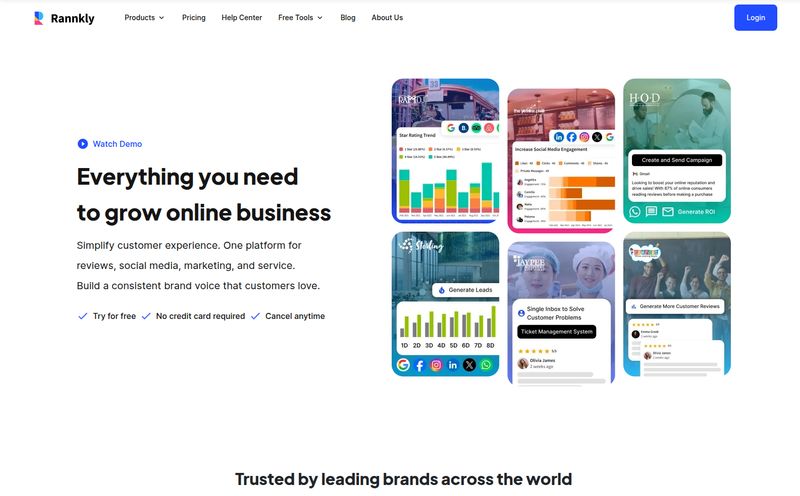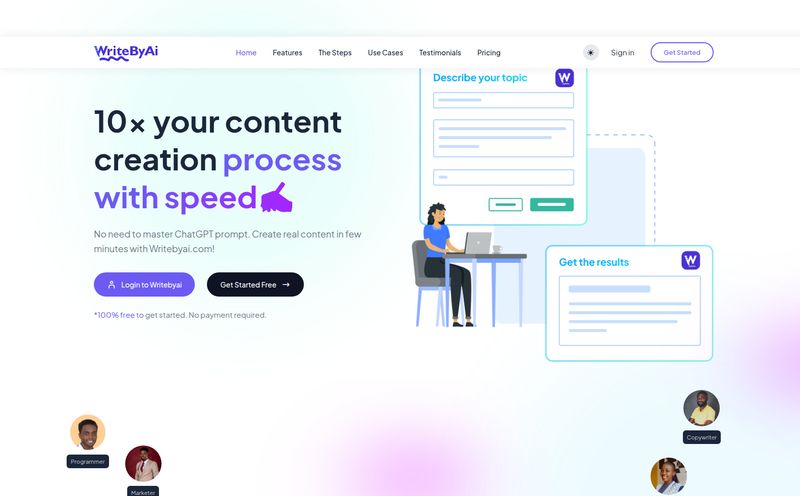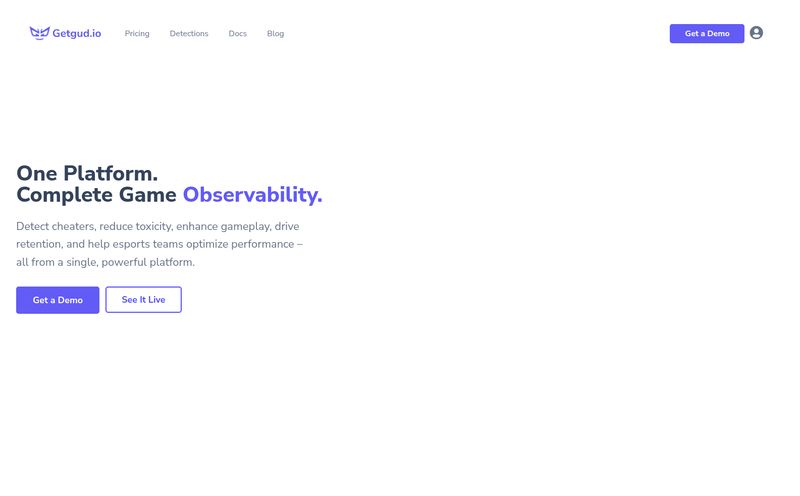That Familiar Sinking Feeling...
You know the one. It’s 3 PM on a Tuesday. Your boss just floated an idea in Slack, and it’s actually a good one. But it hinges on one tiny piece of data. “What was our customer churn rate in the Midwest last quarter for users who came from paid ads?”
Simple question, right? Ha. You fire off an email to the data team, marking it ‘urgent’. The auto-reply dings back instantly: “Thanks for your request! Your ticket is #8675309 and will be addressed in the order it was received.” You sigh. The data team is a fortress, and you’ve just been handed a paper straw to dig through its walls. By the time you get that number, the momentum will be gone, the idea forgotten.
It’s a story I’ve heard, and lived, a thousand times. This communication breakdown, this data bottleneck, is one of the most persistent pains in modern business. And every now and then, a tool pops up that claims to be the cure. Recently, I stumbled upon one with a catchy name: Data Sherlocks.
The promise was intoxicating. A platform that lets you ask your database questions in plain English. No SQL, no tickets, no waiting. Just answers. But when I went to check it out… well, the game was not afoot.
What Data Sherlocks Was Supposed to Be
Before we get to the mystery, let's talk about the dream. Data Sherlocks wasn't just another dashboard builder. Its core idea was to be a true conversational interface for your company's data, powered by generative AI. Think of it as a universal translator between human questions and the rigid, unforgiving language of databases like PostgreSQL or MySQL.
The goal was to achieve what we in the industry call data democratization. A lofty term, I know, but it just means getting data out of the hands of a select few and into the hands of the people who actually need it to make decisions—marketing, sales, operations, you name it. For years, the solution was to train everyone on complex BI tools or, worse, try to teach them SQL. It rarely sticks.
Data Sherlocks wanted to flip the script. Instead of you learning the machine’s language, the machine would learn yours.
The Killer Features That Never Were
Based on the whispers and digital breadcrumbs I could find, the platform was building towards a few killer applications:
- Natural Language Querying: This was the main event. The ability to just type, “Show me our top 10 selling products in Europe this year” and get an instant, accurate chart. No code, just curiosity.
- Automated Report Generation: Imagine your weekly and monthly reports just… happening. Automatically. Based on prompts you set up once. The time savings alone would be incredible.
- An Automated Semantic Layer: Okay, this one’s a bit jargony, but it’s huge. A semantic layer is like a shared dictionary for your company's data. It ensures that when the sales team says “revenue” they mean the exact same thing as the finance team. Getting this right is a nightmare, and Data Sherlocks promised to automate its creation. A bold claim, and one that, if successful, would be a game-changer for team alignment.
It was all there. The perfect solution for teams tired of flying blind. So, what happened?

Visit Data Sherlocks
The Case of the Missing Deployment
This is what I found when I went looking for Data Sherlocks. A cold, sterile 404 error. A digital dead end. The message “This deployment cannot be found” is the modern equivalent of a “Gone Fishin’” sign on an abandoned storefront.
What does it mean? In my experience, this usually points to a project hosted on a platform like Vercel or Netlify that has been taken down or has failed. For a tool that was, by its own admission, “bootstrapped and unbacked,” this isn't entirely surprising. It's the brutal reality of the tech world. For every unicorn, there are a thousand beautiful ideas that run out of runway.
I have to say, it’s a bit of a bummer. The idea was so solid. Maybe they got acqui-hired and the project was shuttered. Maybe the founders ran out of steam or cash. Maybe they hit a technical wall they couldn't overcome. We might never know. It’s a ghost in the business intelligence machine.
Why the Idea Behind Data Sherlocks Still Matters A Lot
Okay, so Data Sherlocks might be gone (for now?). But let's not throw the baby out with the bathwater. The problem it was trying to solve is more relevant than ever. The demand for accessible, on-demand data insights is exploding, and the big players are taking notice.
The Bottleneck Is an Industry-Wide Crisis
Your friendly neighborhood data analyst is drowning. They're buried under a mountain of ad-hoc requests, many of which are variations of the same question. This doesn't just slow down marketing and sales; it prevents the data team from working on bigger, more strategic projects that could actually move the needle. Everyone loses.
Tools that break this cycle—that empower business users to self-serve—are not just a “nice-to-have.” They’re becoming a competitive necessity.
The Semantic Layer Is the Holy Grail
I mentioned this before, but it bears repeating. The reason you can’t just plug ChatGPT into your database is that it doesn’t understand context. It doesn’t know that your company calculates “Active Users” in a very specific way. A solid semantic layer provides that business logic, and building one is a massive undertaking. The promise of automating it is what separates next-gen tools from the old guard. It’s a space I’m watching very closely.
A Post-Mortem on the Pros and (Now Obvious) Cons
Looking at the tool's own stated strengths and weaknesses is almost poignant now.
| Pros | Cons |
|---|---|
| Quick access to data insights | Bootstrapped and unbacked |
| No SQL knowledge required | Reliance on supported databases |
| Streamlined team communication | |
| Secure cloud environment | |
| Easy to use interface |
The pros list is basically the modern BI wish list. It’s what everyone wants. But that first con, “Bootstrapped and unbacked,” turned out to be the fatal flaw. It’s a double-edged sword. On one hand, it gives a startup freedom and agility. On the other, it means there’s no safety net. No deep-pocketed VC to bridge a tough few months. It's a high-wire act, and sometimes, the wind just blows too hard.
So Where Do We Go From Here?
The spirit of Data Sherlocks lives on. The need for natural language data interaction is pushing major platforms like Tableau and Microsoft's Power BI to integrate more sophisticated AI features. There are also other startups in the space, like ThoughtSpot and Tellius, who have been tackling this problem for a while, albeit with more funding and a different approach.
The dream of simply asking a question and getting an answer is not dead. It's just… complicated. The story of Data Sherlocks is a cautionary tale, a reminder that a great idea is only the first step. Execution, funding, and a little bit of luck are the other ingredients. I, for one, am still rooting for the next tool that takes a shot at this problem. I’ll just be sure to check if they’ve paid their hosting bill.
Frequently Asked Questions
- What was Data Sherlocks?
- Data Sherlocks was a planned software platform designed to let users ask questions about their business data using normal, conversational language (like English) instead of needing to write complex SQL code. The goal was to provide quick insights and reports for teams like marketing and sales.
- Why can't I access the Data Sherlocks website?
- The website currently shows a '404 NOT_FOUND' error, which indicates the web application or deployment has been taken down. As a bootstrapped (self-funded) project, it may have been discontinued, paused, or is experiencing technical failure.
- What does 'no-SQL data query' mean?
- It means you can retrieve information from a database without using SQL (Structured Query Language), which is the standard programming language for database management. Instead, you'd use a simpler interface, like a search bar where you type your question in plain English.
- Are there alternatives to Data Sherlocks?
- Yes, the concept of conversational BI is growing. Some established players in this space include ThoughtSpot and Tellius. Additionally, major BI platforms like Tableau, Power BI, and Looker are increasingly incorporating natural language and AI-powered features into their products.
- What is a semantic layer and why is it important?
- A semantic layer is a business-focused representation of your data. It translates complex data names (like `cust_trxn__fy24_q3`) into familiar business terms (like 'Customer Sales in Q3 2024'). It ensures everyone in a company uses the same definitions for key metrics, leading to more consistent and accurate reporting.
- Why is being 'bootstrapped' a risk for a SaaS tool?
- Bootstrapping means the company is built using only personal savings and revenue, without outside investment. While it allows founders full control, it also means they have limited financial resources. This makes them more vulnerable to market changes, slow growth, or unexpected costs, which can sometimes lead to the project being shut down.
Conclusion
The tale of Data Sherlocks is a classic startup story. A brilliant idea, a clear problem to solve, and an uncertain fate. While we can’t log in and ask our data a question today, its ghost serves as a powerful reminder of where our industry is heading. The desire to break down the walls between people and their data is stronger than ever. The tools may come and go, but the quest for answers continues. And as an SEO and data geek, I can't wait to see who cracks the case next.
Reference and Sources
For more information on the concepts discussed in this article, you can explore the following resources:



